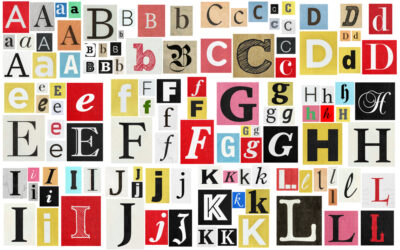Whether you’re an experienced UX/UI designer or a beginner, incorporating the Rule of Thirds into your design arsenal is essential. This timeless principle, dating back centuries, has the power to enhance your interfaces for balance, professionalism, and effectiveness.
In this comprehensive guide, we’ll delve into why the Rule of Thirds is invaluable, when it’s best applied, and the optimal strategies for integrating it seamlessly into your designs. Let’s get started!
Understanding the Rule of Thirds
At its essence, the Rule of Thirds is a foundational principle guiding UX/UI designers in crafting balanced and visually captivating layouts. It involves dividing your design canvas into a 3×3 grid, forming nine equally proportioned quadrants. The key concept is to place important elements along these gridlines or at their intersection points. This creates a visual hierarchy of what is most important. This rule of thirds grid-based approach adds structure and directs users’ attention to focal points, enhancing usability and aesthetic appeal.
Originating from art and photography, it has since moved into graphic design to create a sense of visual balance and visual interest. By integrating this principle into your UX/UI designs, you establish symmetry and coherence, enabling smoother user navigation across interfaces.
The Rule of Thirds in UX/UI Design
In UX/UI design, applying the Rule of Thirds requires careful consideration of where and how elements are placed within the grid. The top-left intersection, often termed the ‘primary focal point,’ is particularly significant. In this sweet spot, you’d typically position the most critical element, such as a call-to-action button or impactful headline copy. Placing this key element at the primary focal point immediately draws the user’s attention, effectively guiding them towards the desired action.
The Rule of Thirds vs. the Golden Ratio vs. the Phi Grid
When researching the Rule of Thirds, you might also encounter other popular compositional design techniques—the Golden Ratio and the Phi Grid.
The Golden Ratio
The Golden Ratio, represented by the mathematical constant phi (φ ≈ 1.618), defines a proportional split of approximately 38% and 62%. In UX/UI design, the Golden Ratio helps create visually appealing compositions by dividing elements to maintain this consistent ratio. It guides the viewer’s eye to the “sweet spot” in the smaller section, fostering aesthetic harmony.
One example is a landing page designed using the Golden Ratio often resembles a seashell, reflecting the natural and artistic harmony associated with this ratio.
The Phi Grid
Inspired by the Golden Ratio, the Phi Grid is its evolved cousin in photography and design. Unlike equal thirds, the Phi Grid divides the frame based on the Golden Ratio’s proportions, creating a more nuanced grid structure. This is particularly beneficial for achieving a slightly off-centered yet harmoniously balanced design.
Comparison to the Rule of Thirds
While the Golden Ratio and Phi Grid offer sophisticated compositional tools, the Rule of Thirds is simpler and more versatile. It’s easier to implement and adapt to different screen sizes and layouts. Unlike the fixed ratios of the Golden Ratio and Phi Grid, the Rule of Thirds provides greater flexibility in placing key elements precisely where they need to be.
Why Hire a Professional UX/UI Design Company
Of course, it is not always as simple as it may appear. Many people hire professional UX/UI Design Companies to ensure that principles like The Rule of Thirds is used across platforms. Here are the top reasons why implementing UI/UX design services is crucial:
1. Increased Sales
UI/UX design extends beyond colors and fonts; it influences user decisions. By optimizing user experience, it convinces potential customers to choose your products or services, ultimately boosting sales.
2. Cost-Efficiency
Professional UI/UX designers ensure seamless interactions and interfaces, reducing development costs in the long run. Investing in a quality team prevents errors and guarantees a positive user experience, saving time and money on fixing issues later.
3. Enhanced Customer Satisfaction
Well-designed UI/UX eliminates frustrating elements, leading to higher customer satisfaction. User-friendly interfaces cater to a diverse range of users, improving overall usability and satisfaction levels.
4. Creating a Favorable Brand Image
Strong first impressions matter. Users often judge websites and apps based on their design. By understanding your audience’s preferences and dislikes, you can create UI/UX designs that enhance customer satisfaction and contribute to building a positive brand reputation.
5. Traffic Boost
Clear navigation and engaging content are crucial for successful app architecture. Providing users with the information they need enjoyably keeps them engaged and coming back for more, ultimately boosting traffic to your platform.
6. Improving Your SEO
Understanding your audience’s preferences helps in creating user-centric designs, which can improve customer satisfaction and enhance your brand reputation. Additionally, Google rewards websites with better user experiences by ranking them higher in search results. Investing in top-notch UI/UX design can improve your website’s SEO performance and visibility.
These benefits highlight the critical importance of intelligent web designs tailored to your customers’ needs and preferences for the success of your business. By focusing on user satisfaction and building a strong brand reputation, your company’s website or app will stay ahead of the competition.
Choosing the Right UX/UI Design Company
It is essential in choosing a design company to consider not only the firm’s characteristics but also specific attributes relevant to business compatibility. Here are a few specific topics to look into when choosing the right UX/UI Design Company.
Reputation & Feedback
What’s the word on the street about this organization? Is silence sometimes better than saying something negative? Asking yourself such questions helps narrow down your options.
Scan through testimonials, reviews, and user feedback online to gauge trustworthiness, credibility, and reliability. Dive into thorough research on an agency’s reviews to gauge if they align with your needs.
Past Track Record
The level of experience or previous agency work plays a crucial role in selecting the right UI/UX agency. While newer firms may lack extensive history, the quality of experience matters more than the duration. It also pertains to their specific expertise. Look for essential skills and competencies in a UI/UX design company, such as mobile app or web development services.
What projects have they undertaken previously? There are various ways to gain experience. To refine your options and find the best-fit agency for your brand, thoroughly examine all aspects, including the design team.
Portfolio Assessment
Consider what the organization has achieved when choosing a UI/UX design firm. This includes the types of projects they’ve handled (like e-commerce, real estate, or media), project scale, customer satisfaction, and more.
Portfolios reveal a company’s design preferences and their ability to stay updated with the latest trends, helping you assess if they align with your needs. It would be challenging to collaborate with a UI/UX design agency lacking experience or with incompatible design styles.
Workflow Analysis
When choosing a UI/UX agency, delve into their workflow. Both the company’s processes and its end products matter. To provide timely feedback during development, it’s essential for you, the client, to understand how your product is being crafted.
Understanding a workflow doesn’t mean you have to adopt it within your organization. It also doesn’t require an in-depth understanding of technical development and design aspects. Rather, you need to grasp what’s involved at each stage. Familiarizing yourself with an agency’s workflow can save you considerable time and money.
Pricing Evaluation
This may seem obvious, but it’s crucial nonetheless. Make sure to get a detailed estimate before green-lighting any work. Staying within your budget is paramount to avoid overspending or underspending, both of which can lead to subpar results. Pricing plays a significant role in selecting a UI/UX agency. Establish a budget, stick to it, and communicate your requirements transparently with the agency.
Flawlessly Using Rule of Thirds with Adnorml
Rather than aiming for popularity, the priority should be finding the agency that aligns best with your needs. To select the ideal design agency, it’s crucial to consider the previous factors.
At Adnorml, we work closely with you as your new UI/UX design service provider to ensure the highest level of compatibility. Feel free to ask us anything to establish a better understanding and improve your website or app.
Our collective experience and a diverse range of case studies demonstrate the spectrum of clients we effectively cater to. From startups to large enterprises, we specialize in building websites and applications that seamlessly blend design and functionality, catering to the needs of all our clients and their customers.
Reach out to us to learn more about our services and how we can help you build your UX/UI design.

![6 UX/UI Design Trends to Use for Optimization [Infographic]](https://adnorml.com/wp-content/uploads/2024/04/shutterstock_1912867468-400x250.jpg)
